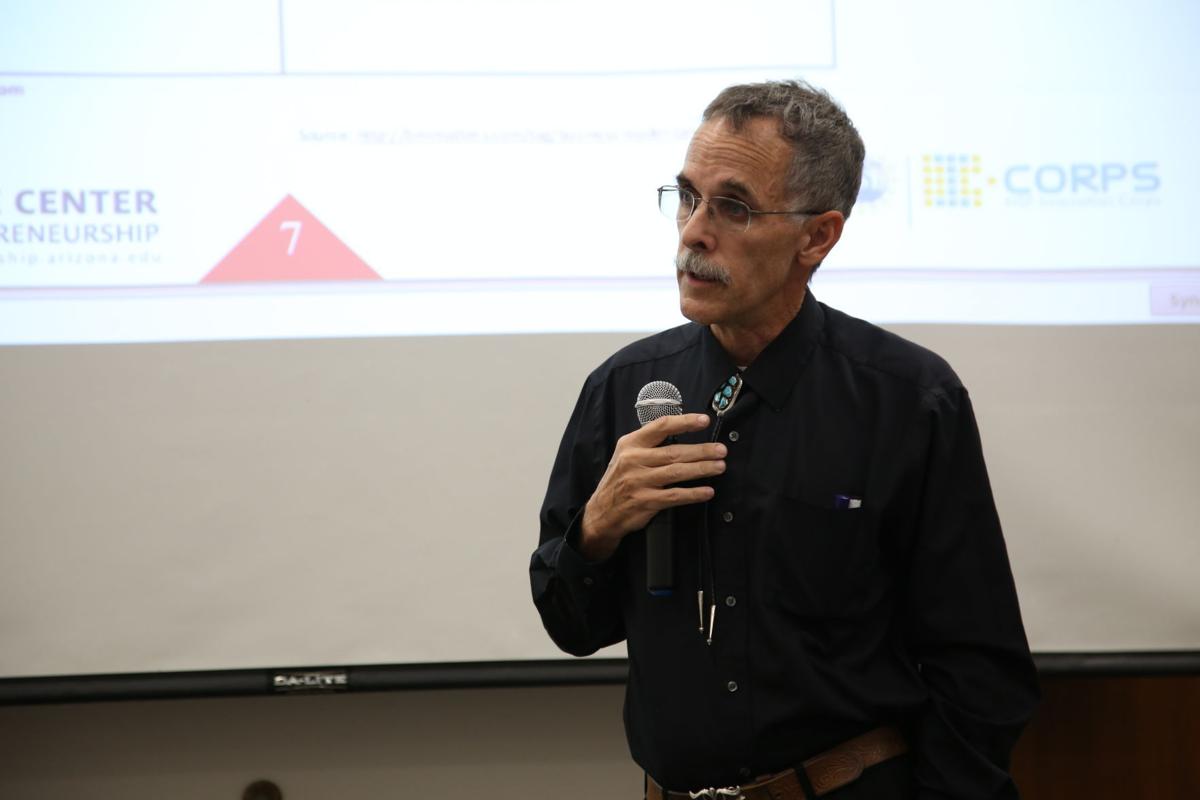The University of Arizona has licensed a new, nonpenetrating sunscreen to a major Mexican company — perhaps reflecting a new formula for cross-border business development as well.
The new sunscreen, developed by UA professor Douglas Loy and graduate student Stephanie Tolbert, binds an active ingredient in most sunscreens so it doesn’t seep into the skin.
MexiAloe Laboratorios, S.A. de C.V., a subsidiary of Mexican food-distribution giant Novamex, helped push along development before inking an exclusive licensing deal with the UA’s Tech Launch Arizona commercialization arm last week.
The new, patent-pending technology addresses concerns over sunscreen chemicals leeching into the body while making the active ingredients last longer, said Loy, whose main UA appointment is in the College of Engineering.
Loy, who also is a professor of chemistry and biochemistry in the UA colleges of science and medicine, said the inspiration for the improved sunscreen came from Tolbert, who was interested in working in the cosmetics industry and wanted to develop sunscreens that wouldn’t pass through the skin, Loy said.
The underlying nanotechnology behind sunscreens uses molecules that block ultraviolet light and encase them in microscopic capsules, including a type made of silica glass known as “pearls.”
Problem is, those chemical “pearls” break down, become even more photosensitive and then leach into the skin, Loy said.
The American Association of Dermatology says oxybenzone and other UV-blocking chemicals are safe, but public concerns have been raised about its effects when absorbed by users, the UA notes.
Loy and Tolbert hit upon a formula that binds the common sunscreen ingredient oxybenzone in a way so that they do not break down.
While typical sunscreens encase small-molecule UV blockers inside a shell, Loy said the new technology he developed with Tolbert makes the active ingredients part of a larger, macromolecule that can’t be absorbed.
“The entire particle would somehow have to get through your skin for it to get inside you, and there’s no way for that to happen,” said Loy.
The formula also makes the sunscreens last longer so they wouldn’t have to be reapplied as frequently, said Loy, who was named Inventor of the Year in physical sciences at Tech Launch Arizona’s fourth annual I-Squared Expo & Awards in April.
Tech Launch Arizona worked to patent the invention and license it to MexiAloe, one of the largest suppliers of aloe vera in North America.
The potential market for a nonpenetrating sunscreen is huge. In the U.S. alone, the market for sun-care products is expected to reach $11.1 billion by 2020, according to market research cited by the UA.
“With these licensed patents from UA, we are looking forward to provide innovative solutions for consumers that now more than ever are looking for natural and functional sunscreens,” Luis Fernandez, CEO of Novamex, said in prepared remarks as part of the UA’s licensing announcement.
Tech Launch Arizona provided funds to develop the sunscreen technology beyond basic research through its Asset Development program. The agency’s Commercialization Partners, a volunteer force of experienced entrepreneurs, helped provide advice and strategic direction.
The licensing deal was handled by Paul Eynott, a former Tech Launch licensing manager who recently left to head business development for the California-based veterinary drug startup Anivive Lifesciences.
MexiAloe was involved early on in the project to create a product for the company to test and validate the researchers’ findings.
MexiAloe found the UA technology in 2016 when a business-development consultant contacted Tech Launch looking for personal health-care technologies to license on behalf of MexiAloe Laboratorios, said Bob Logan, UA assistant dean for external and corporate relations.
Afterwards, UA College of Science Dean Joaquin Ruiz invited Novamex’s Fernandez for a visit, ultimately leading to the licensing deal.
Such collaborations make sense, Logan said, noting that Ruiz has deep connections to Mexico’s research community and already has visited south of the border with new UA President Robert Robbins.
The UA already collaborates with Mexican universities and research institutes on dozens of academic projects, according to the Consortium for North American Higher Education Collaboration, which is based at the UA.
“We are looking at many other types of collaborations with Mexico,” Logan said.





